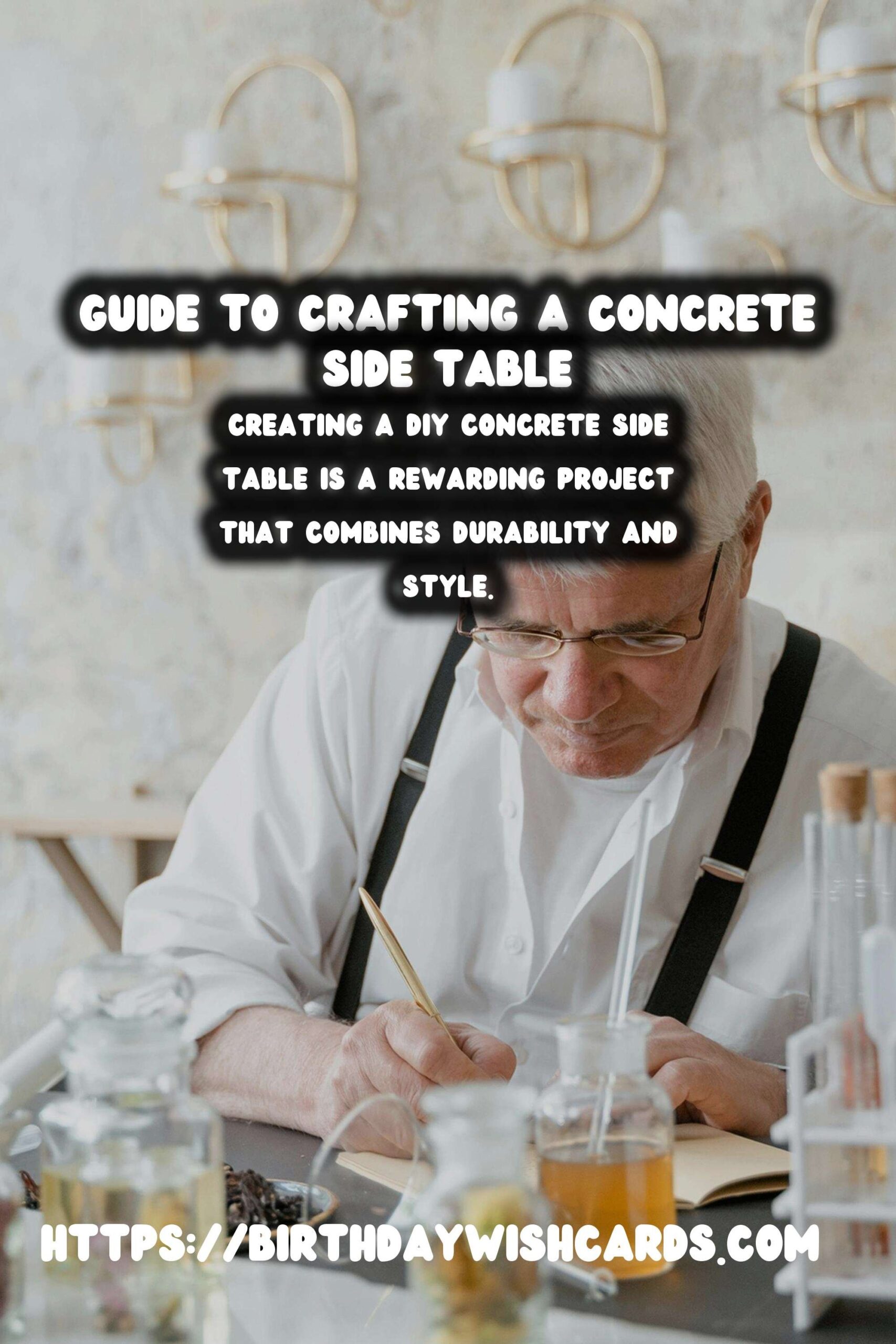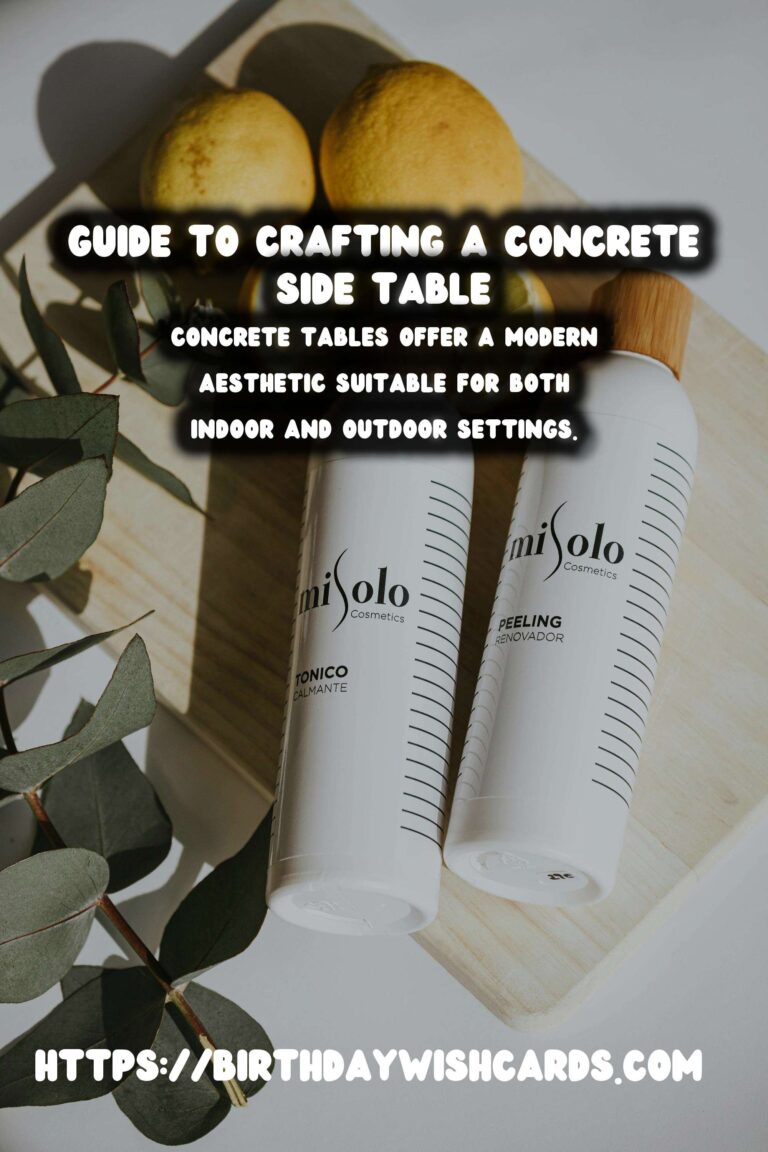
Creating your own furniture can be a rewarding experience, and a DIY concrete side table is a perfect project for both beginners and seasoned DIY enthusiasts. Concrete furniture is not only durable and stylish but also surprisingly easy to make with the right materials and guidance.
Why Choose a Concrete Side Table?
Concrete tables offer a modern and minimalist aesthetic that can complement any decor. They are robust and weather-resistant, making them ideal for both indoor and outdoor use. Additionally, crafting a concrete table allows for customization in shape, size, and color, giving you a unique piece that fits perfectly in your space.
Materials and Tools You Will Need
Before you start, gather these essential materials and tools:
- Concrete mix
- Water
- Mixing bucket
- Stirrer or mixing tool
- Mold for the table top (plastic or silicone works well)
- Sandpaper
- Sealant
- Legs or base for the table
- Level
- Protective gloves
Step-by-Step Instructions
Step 1: Preparing the Mold
Choose a mold that will define the shape of your table top. Ensure that it is sturdy and can hold the weight of the concrete. Apply a release agent or cooking spray to the inside of the mold to prevent sticking.
Step 2: Mixing the Concrete
Follow the instructions on your concrete mix packaging. Typically, you will combine the mix with water in a large bucket. Stir thoroughly until the mixture has a smooth, even consistency. Be mindful not to add too much water, as this can weaken the concrete.
Step 3: Pouring the Concrete
Carefully pour the concrete into the prepared mold. Tap the sides of the mold gently to release any air bubbles that might form. Use a level to ensure the surface is even.
Step 4: Curing the Concrete
Allow the concrete to cure for the time specified on the mix package, which is usually around 24 to 48 hours. Keep the mold in a cool, dry area during this process.
Step 5: Removing the Mold
Once the concrete has fully cured, gently remove the mold. If the mold resists, use gentle pressure and additional release agent if necessary.
Step 6: Finishing Touches
Sand any rough edges on the table surface or sides to achieve a smooth finish. Apply a concrete sealant to protect the surface from stains and moisture.
Step 7: Attaching the Legs
Securely attach the legs or base to the underside of the concrete top. Ensure that the table is balanced and stable before placing any weight on it.
Tips for Success
When selecting your concrete mix, consider the finish you desire. Some mixes contain additives for a smoother finish or different colors. Experiment with small batches to find what best suits your aesthetic goals.
Conclusion
Creating a DIY concrete side table is a practical and stylish way to add personal flair to your home. With a few materials and some patience, you can craft a unique piece that showcases your creativity and craftsmanship.
Creating a DIY concrete side table is a rewarding project that combines durability and style. Concrete tables offer a modern aesthetic suitable for both indoor and outdoor settings. The process involves mixing, pouring, curing, and finishing concrete in a chosen mold. Proper preparation and finishing ensure a smooth, polished look for your table. Personalization in shape, size, and color allows for a unique piece tailored to your space.
#DIY #ConcreteTable #HomeDecor #Furniture #InteriorDesign

